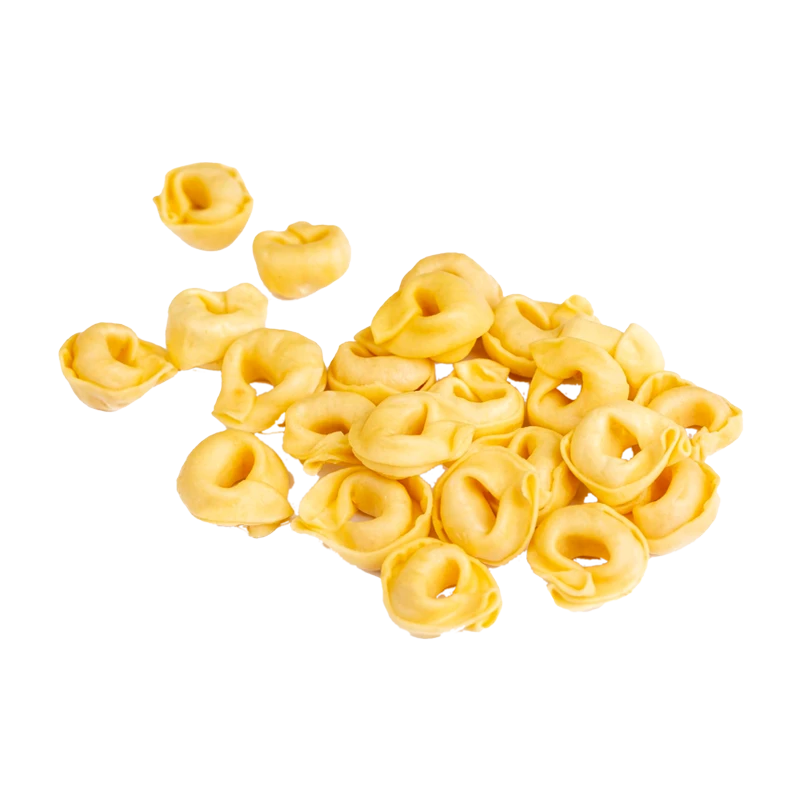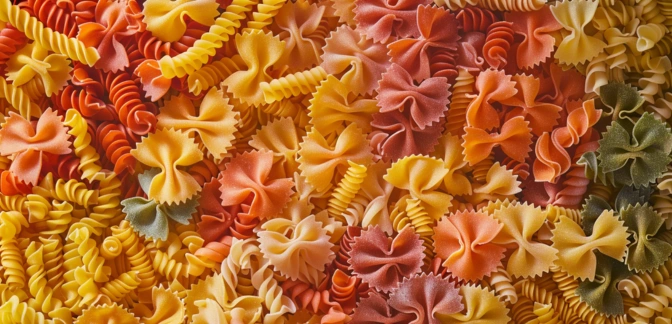Tortellini — Nutrients, Health Benefits, And Shopping Tips

Written by Listonic Team
Last update on September 4, 2024
Tortellini nutrients
Nutrition facts
Amount per 100 g
Calories
🔥 203 kcal
| Nutrition per: 100 g | Value | % Daily Value* |
|---|---|---|
| Carbs | 34 g | 12.36% |
| Fiber | 2 g | 7.14% |
| Sugars | 1 g | 2% |
| Glycemic Index | 50 | - |
| Protein | 8 g | 16% |
| Sodium | 330 mg | 14.35% |
| Total Fat | 4 g | 5.13% |
*The % of Daily Value (DV) tells you how much a nutrient in a serving of food contributes to a daily diet. 2,000 calories a day is used for general nutrition advice.
50
🟢 Low Glycemic Index
1 g
🍏 Low Sugar Content
Tortellini facts & tips
Health benefits
- Rich in protein (especially if filled with meat, cheese, or spinach), which is essential for muscle growth, repair, and overall body function.
- Provides sustained energy from its carbohydrate content, making it a good source of fuel for the body and brain.
- Contains essential vitamins and minerals if made with enriched flour, such as iron and B vitamins (like folic acid), which support overall health and well-being.
- Versatile and nutritious, allowing for the inclusion of various healthy fillings like vegetables, lean proteins, and cheeses.
- Low in fat if prepared with healthy cooking methods and paired with nutritious sauces like tomato-based or vegetable-rich sauces.
Health risks
- High carbohydrate content particularly in tortellini made from refined white flour, which can cause rapid spikes in blood sugar levels, particularly concerning for diabetics.
- High calorie content particularly in tortellini filled with cheese, meat, or other calorie-dense ingredients, which can contribute to weight gain if consumed frequently or in large portions.
- High sodium content particularly in commercial or pre-packaged tortellini, which can contribute to hypertension and increased cardiovascular risks.
- Potential for gluten content making it unsuitable for individuals with celiac disease or gluten sensitivity, potentially causing digestive discomfort and other health issues.
How to choose tortellini
Tortellini should be well-formed with a smooth, uniform surface and a visible filling that is proportionate to the pasta. The pasta should be al dente after cooking, offering a slight resistance to the bite.
Do not purchase tortellini that is mushy or has burst during cooking, as this can indicate old pasta or poor manufacturing. Tortellini that has an off smell or a bland taste should also be avoided, as it will not deliver a satisfying meal.

How to store tortellini
Fresh tortellini should be refrigerated in an airtight container. Refrigeration keeps it fresh for up to three days. Freezing is suitable for longer storage.
Air exposure dries out tortellini. Avoid stacking without protection, which can cause sticking. Handle gently and use a clean container to maintain shape and texture. Proper storage ensures tortellini stays tender and delicious.
✅ Extra Tip
How long does it last?
Tortellini can last for 3-5 days in the refrigerator once cooked. For longer storage, cooked tortellini can be frozen for up to 2-3 months.
What to do with leftovers?
Leftover tortellini can be used in a variety of savory dishes. Reheat it and serve with your favorite sauce for a quick meal, or bake it in a casserole with cheese and vegetables for added texture and flavor. Tortellini is also great when tossed in a butter sauce with fresh herbs, garlic, and Parmesan.
Use tortellini in a pasta salad with fresh vegetables, olives, and a tangy vinaigrette, or mix it into a soup with broth, greens, and beans for a hearty dish. If you have a lot of tortellini, consider making a batch of tortellini lasagna by layering the pasta with sauce, cheese, and meat, then baking until bubbly. Tortellini can also be fried and served as an appetizer with marinara sauce for dipping. For a quick snack, reheat tortellini and serve with a drizzle of olive oil and a sprinkle of Parmesan, or toss with pesto for a flavorful twist.
👨⚕️️ Medical disclaimer
Discover products from other categories
Listonic Team
Fact-checked
Our editorial team checked this article to make sure it was accurate at the time of publishing it.
Get the top-rated shopping list app

tortellini
1 piece
Outline







